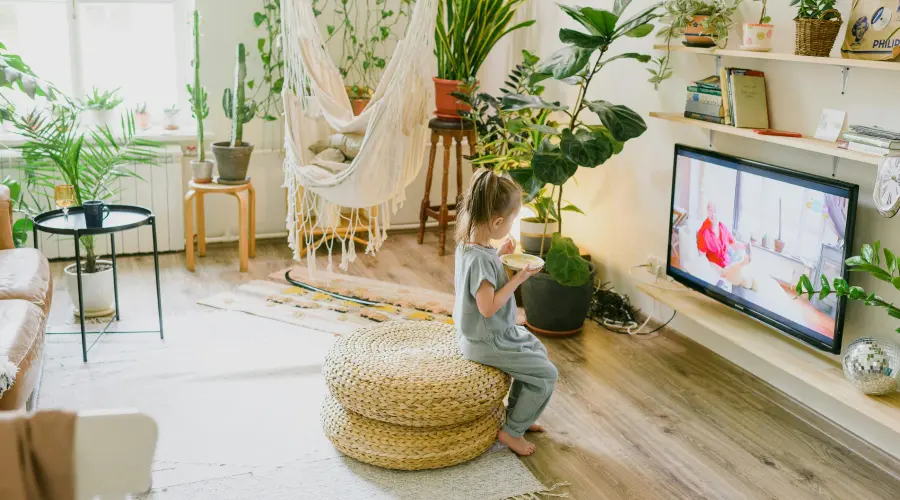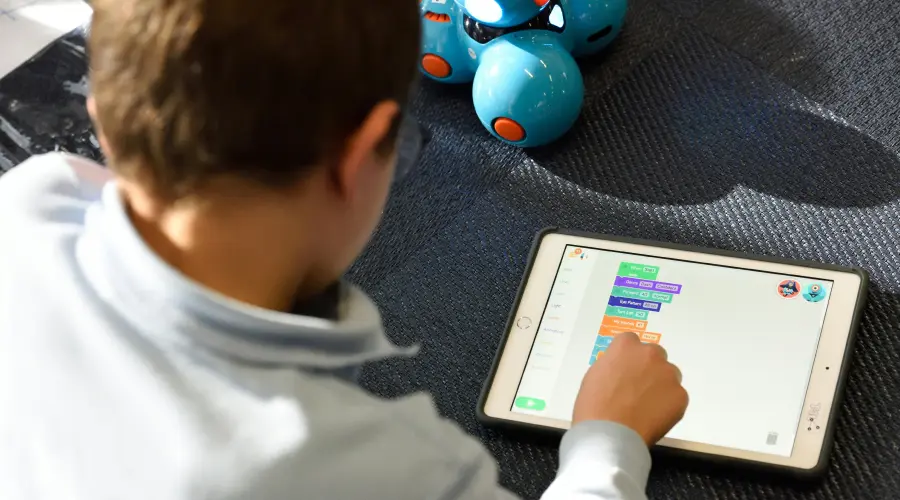settings
children
With Famly since
As an aunt of five children under the age of 5, I have watched my fair share of Ms. Rachel, CocoMelon, Peppa Pig, and Laurie Berkner. And I know I am not the only one. If you have, or know a young child well, then you probably are in the same boat - for better or for worse.
There is a pretty strong divide between parents and carers about screen time. I was interested in diving more into this controversy.

First off, I was shocked at what I learned from my first search.
I looked into the top early childhood YouTubers worldwide with the most subscribers. The results are:
- Cocomelon - 183 million subscribers
- Kids Diana Show - 126 million subscribers
- Vlad and Niki - 125 million subscribers
- Like Nastya - 120 million subscribers
- ChuChu TV Nursery Rhymes & Kids Songs - 93.2 million subscribers
- Baby Shark – Pinkfong! Kids' Songs & Stories - 77.8 million subscribers
My first reaction: “Ms. Rachel isn't there?!” Which was closely followed by, “Ohhh my god that is an insane amount of subscribers.”
This led me to wonder, “How insane”? How do these numbers of subscribers compare to other YouTube sectors?
- Top gaming YouTube channel – PewDiePie: 104 million subscribers.
- Top music YouTube channel – BlackPink 90.4 million subscribers
“Umm what?!” Both of those have less subscribers than the top 4 childhood YouTube channels listed above.
So then I had to ask, across all of YouTube, what are the 5 top channels with the most subscribers? And guess what? 2 of the 5 are YouTubers for early childhood.
- MrBeast
- T-Series
- CoComelon
- SET India
- Kids Diana Show
Mind. Blown. 🤯
With these insanely high numbers, it’s hard to imagine that any parents of young children aren’t subscribed to these channels. But, we do have to ask: Are these YouTube channels supporting the little one’s growth and development or is this just further proof that the children are spending too much time in front of the screens?
Let’s investigate.
What does the research say about screen time?
There isn’t a ton of research that tells us the perfect amount of screen time for kids at every age. But, here’s what we do know:
According to the American Academy of Pediatrics (AAP), too much screen time can be linked to lower language development and social-emotional skills. So, first things first – moderation is key.
The American Academy of Child and Adolescent Psychiatry (AACAP) also has some general guidelines to help steer parents in the right direction when it comes to screen time for younger kids:
- Children under 18 months:
Limit screen time to FaceTime or video chatting with family. At this age, real-world exploration and face-to-face interaction are essential to support their growing brains. - Children 18-24 months:
If you’re introducing screen time, stick to high-quality, educational content, and it’s best to have adults watch with them to help them engage and understand. - Children 2-5 years:
Same deal—focus on high-quality educational content. As non-educational shows sneak in, try to limit that content to about one hour a day.
The AACAP also suggests a few screen-time “house rules,” like turning off all screens during meals (family time!) and setting up parental controls to make sure the content is age-appropriate.
What is high-quality programming?
Simply put, high-quality programming is content that’s not just fun but also helps kids learn. Think shows that help with language skills, counting, letters, and more. So, when thinking about screen time, it’s not just about how much your child watches but what they’re watching.
This is super important to keep in mind as we dive into the pros and cons of screen time for little ones. Time to dig in.

YouTube for young children - the pros and the cons
Pros:
- Educational content
These days, a lot of YouTube content is actually really educational, focusing on things like language skills and basic concepts like counting and shapes. These videos can help kids build important foundational skills. - Engagement and attention span
Bright colors, catchy songs, and repetitive actions? Yup, that’s the secret sauce for grabbing children’s attention. And, it might even help increase their ability to focus for longer periods of time. - Convenient learning resource
Kids are like sponges, soaking up everything around them. These videos expose kids to new vocabulary, topics, and cultural elements that might not pop up in everyday life. - Reinforcement of routine and structure
Ever heard those tooth-brushing or clean-up time songs? Some videos are great at reinforcing routines you’re already working on at home. - Age-appropriate entertainment
Let’s be real—these shows are fun, which is why they have millions of subscribers! Plus, they do have to follow certain guidelines, so you can trust that the content is not just enjoyable, but also safe and age appropriate. - Every parent needs a break
It’s just the truth, and there’s no shame in that. Laundry needs to get done, and sometimes you just want to be able to have a conversation at the dinner table without any interruptions. Sometimes a YouTube video is what it takes, and there’s no shame in that!
Cons:
- Screen time overload
Yup, too much of anything isn’t great. Too much screen time can lead to issues like delayed speech or social skills, especially when it takes away from important face-to-face interactions and active playtime. - Passive learning
Watching a video doesn’t exactly count as hands-on learning. Even if the content is good, it’s still mostly passive. - Overstimulation
Those bright colors and fast-moving visuals that capture attention? They can sometimes be a little too much. It may make it harder for kids to focus on calmer activities like reading or quiet play. - Less social interaction
More screen time usually means less people time. And we know that interacting with others is a big deal for little kids’ social and emotional development. - Addictive nature
Adults know this too. YouTube personalities and videos can be so entertaining that they become addictive. Kids can become a little too reliant on them, making it harder to transition to other activities (like bedtime) - cue tantrums when the screen goes off!
Well, none of this is that surprising
I can understand both sides of the argument. I think we can all agree that there is such a thing as too much screen time, but after doing some investigating, I would say that YouTube is not the big bad wolf, and does not need to be completely avoided. The quality of the content, and the level of engagement are the two most important factors to consider when choosing what YouTube personality to subscribe to, and which videos to watch.

Is YouTube better than the classic TV shows and movies?
YouTube is its own type of screen time. With short videos that are seconds or minutes long, to longer videos that are 45-60 minutes long. So, how does it compare to other screen time – the traditional TV shows and movies? You know, Cinderella, Beauty and the Beast, Rugrats, Recess, Mr. Rogers, Aruthur, Madeline, and so on - sorry nostalgia got the best of me for a minute.
Pros of the classic TV show and movie
- Storytelling and longer length
TV shows are at least 20 minutes long. With the longer length, TV shows and movies can go into a more in-depth story, with focus on character development, and following a plot from start to finish, that usually consists of a conflict and resolution or a goal, perseverance or a lesson learned.
This helps the little ones with longer attention spans, building cognitive skills piecing storylines together, and can really boost their understanding of emotions as they become invested in these memorable characters. - Reviewed and approved content
Popular networks like PBS, Disney or Nickelodeon usually have child development experts as a part of their team to ensure that content is entertaining, educational, and age-appropriate.
Parents may feel more secure knowing that traditional TV shows have undergone multiple layers of review - and some have been around for ages like Sesame Street, so they clearly are doing something right! - Set duration
YouTube makes it really hard to stop watching. There are constant recommendations for the next video, and other videos that you may be interested in, sometimes automatically playing the next video, as if the first video never ended. On the contrary, TV shows and movies have a set duration.
So unless you are pressing rewind, there is no endless watching with traditional movies and shows. The activity has a clear start and finish.
Cons of classic TV Shows and movies
- Set duration
Yep, this is both a pro and a con to the traditional TV show and movie. Since they are always of a longer duration, they are not great for shorter activities, like YouTube clips. For parents looking to limit screen time, this can be a downside. - Limited interaction
It’s a bit weird having someone on the screen asking you questions and talking to you, when clearly you cannot have a conversation. But actually, this type of activity on YouTube channels allows for more interactive watching. On the other hand, TV shows and movies are generally more passive, with less opportunity for interaction or immediate learning.

The classic ambiguous answer: “it depends”
Surprise surprise, the answers to both questions - is screen time good or bad and are YouTube clips or TV shows and movies better - is “it depends.”
Neither platform is inherently better than the other—it depends on how they’re used and the quality of the content.
Factors to keep in mind
So with that in mind, here are some questions to ask yourself.
Is the content high quality or educational?
Screen time doesn’t have to be - and shouldn’t be - mindless and passive. Ask yourself what lessons or skills could my child get out of watching this video.
How engaging is the video?
If the video is more passive, then it’s super important for parents or adults to watch too, and ask questions, make comments and encourage the little one to engage with the content. This turns screen time into a shared, interactive learning experience.
Is screen time interfering with real-world, hands-on activities?
Screen time should not replace important activities like playing outside, reading, independent play, arts and crafts, or interacting with others. These real-world interactions are crucial for holistic development.
Are there clear boundaries around screen time?
Establishing clear rules around screen time, like TV should not be on in the background at all times, or no screens right before bed, helps keep screen time within reason.
So again, it really just boils down to “it depends” on the content. But, even if it is educational and high-quality, screen time can never replace the learning, growth and development that occurs when children are interacting and engaging and exploring in the real-world.
The big ideas
Leave language barriers behind
Bring your multilingual community closer with an in-app live translation tool with over 130 languages.
Learn how live translation works







